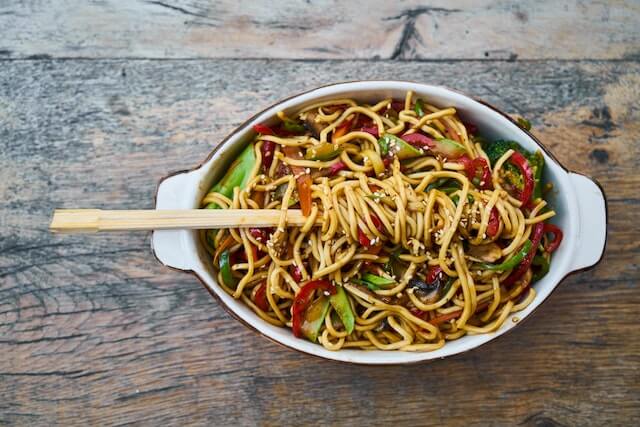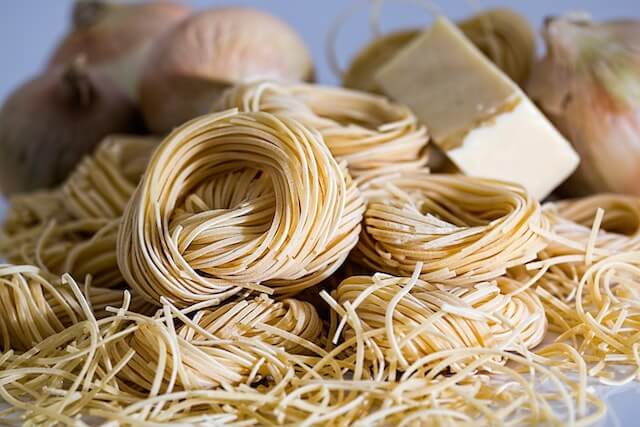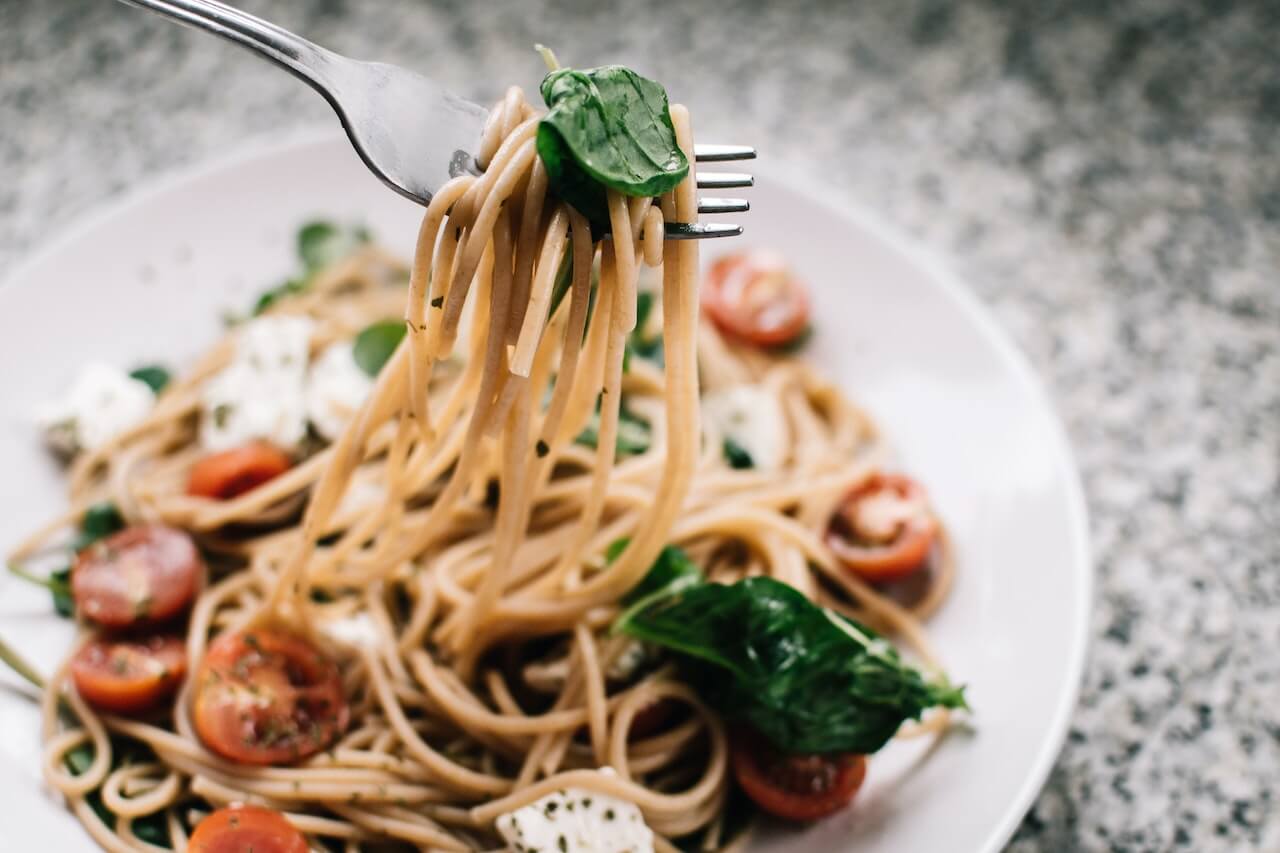If you’re looking for a healthy alternative to traditional pasta, you may have come across “naked noodles.” These low-carb, low-calorie noodles are made from various ingredients such as konjac root or chickpeas and are marketed as a guilt-free way to enjoy your favorite dishes without the added carbs and calories. However, with so many health claims surrounding naked noodles, it’s natural to wonder whether they’re actually good for you. In this article, we’ll take a closer look at the nutritional value of naked noodles, their potential health benefits, and any safety concerns you should be aware of before incorporating them into your diet. By the end of this article, you’ll have a better understanding of whether naked noodles are a healthy option for you.
Table of Contents
Nutritional Value of Naked Noodles
When it comes to assessing the healthfulness of any food, one of the first things to consider is its nutritional content. So, what exactly is in naked noodles? While the specific ingredients and macronutrient composition can vary depending on the brand and type of noodle, most naked noodles are low in calories and carbohydrates and high in fiber. Here’s a closer look at the nutritional value of naked noodles:
- Calories: Naked noodles typically contain between 5 and 30 calories per serving, making them an incredibly low-calorie food option. For comparison, a serving of traditional pasta contains around 200 calories.
- Carbohydrates: Most naked noodles are low in carbs, with less than 10 grams of carbohydrates per serving. This makes them a popular choice for people following low-carb or keto diets.
- Fiber: Naked noodles are a good source of fiber, with between 1 and 5 grams per serving. Fiber is important for digestion, weight management, and overall health.
- Vitamins and minerals: While naked noodles are not a significant source of vitamins and minerals, some varieties may contain small amounts of calcium, iron, and other nutrients.
Overall, naked noodles can be a good choice for people looking to reduce their calorie and carbohydrate intake while increasing their fiber intake. However, it’s worth noting that they are not a complete replacement for other sources of nutrients, and should be consumed as part of a balanced diet. In the next section, we’ll take a closer look at the potential health benefits of naked noodles.

Potential Health Benefits of Naked Noodles
While naked noodles are relatively new on the scene, they have already gained a reputation as a “superfood” thanks to their low-calorie, low-carb, and high-fiber content. Here are some of the potential health benefits of incorporating naked noodles into your diet:
- Weight management: Since naked noodles are low in calories and high in fiber, they can help you feel full and satisfied without overeating. This can be especially helpful for people looking to lose weight or maintain a healthy weight.
- Blood sugar control: Naked noodles have a low glycemic index, meaning they don’t cause a significant spike in blood sugar levels. This makes them a good option for people with diabetes or anyone looking to manage their blood sugar levels.
- Gut health: The fiber content in naked noodles can help promote the growth of beneficial gut bacteria and support overall gut health. This can lead to improved digestion, reduced inflammation, and other health benefits.
- Lower cholesterol: Some studies have suggested that konjac root, a common ingredient in many naked noodles, can help lower cholesterol levels in the blood.
While these potential health benefits are promising, it’s worth noting that more research is needed to fully understand the effects of naked noodles on health. Additionally, not all types of naked noodles are created equal, and some may be more beneficial than others. In the next section, we’ll take a closer look at some of the safety concerns you should be aware of before incorporating naked noodles into your diet.
Get to know also about Itsu, is it Healthy? And a Look at Its Menu and Nutritional Value
Safety Concerns to Consider
- Choking hazard: Naked noodles are often sold in long, thin strands that can be difficult to chew and swallow. In rare cases, this can lead to choking or blockages in the digestive tract. To avoid this risk, it’s important to chew naked noodles thoroughly and drink plenty of water while eating them.
- Risk of intestinal blockages: Naked noodles are made from konjac root, which is high in a type of fiber called glucomannan. While this fiber can help promote digestive health, it can also cause intestinal blockages if not consumed with enough water. To reduce this risk, it’s important to drink plenty of fluids while eating naked noodles.
- Potential interactions with medications: Some studies have suggested that glucomannan, the fiber in konjac root, can interfere with the absorption of certain medications. If you are taking any prescription medications, be sure to talk to your doctor before adding naked noodles to your diet.
- Allergies: Naked noodles are often made from plant-based ingredients such as konjac root or mung bean starch, but they may also contain wheat or other allergens. If you have any food allergies, be sure to check the ingredient label before consuming naked noodles.
Overall, naked noodles can be a healthy addition to your diet if consumed in moderation and with appropriate precautions. As with any new food or supplement, it’s always a good idea to consult with your healthcare provider before making any significant changes to your diet.

How to Incorporate Naked Noodles into Your Diet
If you’re interested in trying naked noodles as part of a healthy diet, there are several ways to incorporate them into your meals. Here are some ideas:
- As a replacement for traditional pasta: Naked noodles can be used in place of regular pasta in most recipes. Simply cook the noodles according to the package directions and then add them to your favorite pasta dishes.
- In soups and stews: Naked noodles can add a unique texture and flavor to soups and stews. Add them to your favorite soup or stew recipe to boost the fiber and nutrient content.
- As a side dish: Naked noodles can be served as a simple side dish with grilled chicken, fish, or tofu. Season the noodles with herbs, spices, or a simple vinaigrette for added flavor.
- In salads: Naked noodles can be added to salads for extra crunch and texture. Combine the noodles with your favorite vegetables, proteins, and dressing for a healthy and satisfying meal.
Overall, naked noodles can be a versatile and healthy addition to your diet. Experiment with different recipes and serving ideas to find the ones that work best for you.
Get to know also about the healthy choices on slimming world
Final Thoughts on Naked Noodles
In conclusion, naked noodles are a healthy and versatile food option that can be enjoyed in a variety of ways. With their high fiber and protein content, as well as their low calorie and fat content, they make a great alternative to traditional pasta. Additionally, naked noodles are gluten-free, making them a suitable choice for those with gluten sensitivities or intolerances.
While naked noodles may not provide all the nutrients your body needs on its own, they can certainly be a nutritious part of a balanced diet. By incorporating naked noodles into your meals, you can boost your fiber and protein intake while enjoying a tasty and satisfying meal.
So the next time you’re looking for a healthy and easy-to-prepare meal option, consider giving naked noodles a try. Whether you enjoy them as a pasta replacement, in soups and stews, or as a simple side dish, they’re sure to provide you with the energy and nutrition you need to power through your day.



